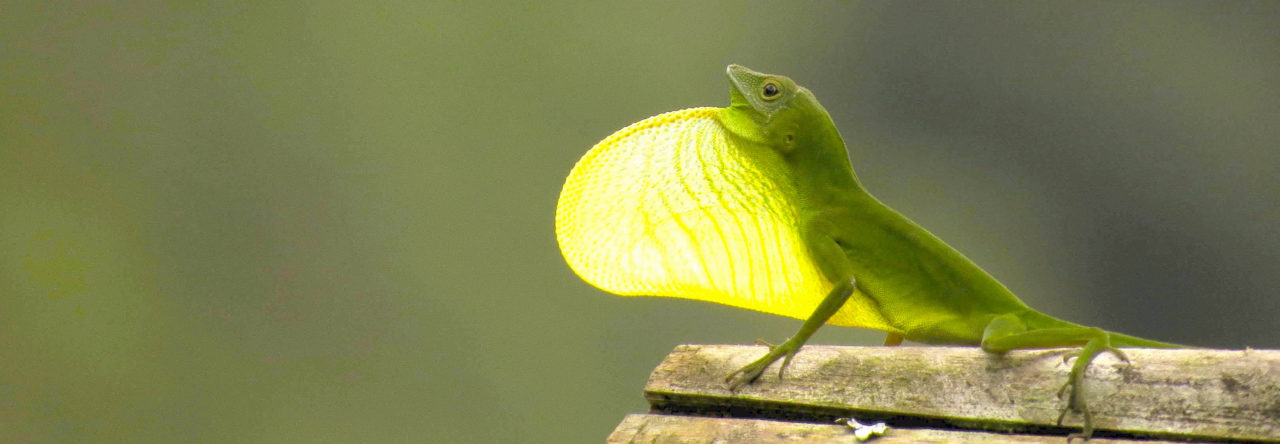 Modifying behaviour is often an animal’s first line of defence against a changing environment. We know from Martha Muñoz’s research that high elevation relatives of Anolis cybotes—A. shrevei and A. armouri–modify their perch use to better thermoregulate in colder climates. In a talk entitled “Behavioural divergence along an altitudinal gradient in a clade of tropical lizards,” graduate student Katie Boronow investigated a number of other behavioural traits, asking whether shifting to high altitudes necessitates a suite of behavioural modifications in the cybotoid anoles.
Modifying behaviour is often an animal’s first line of defence against a changing environment. We know from Martha Muñoz’s research that high elevation relatives of Anolis cybotes—A. shrevei and A. armouri–modify their perch use to better thermoregulate in colder climates. In a talk entitled “Behavioural divergence along an altitudinal gradient in a clade of tropical lizards,” graduate student Katie Boronow investigated a number of other behavioural traits, asking whether shifting to high altitudes necessitates a suite of behavioural modifications in the cybotoid anoles.
Boronow measured basking, display, escape, and locomotor behaviour in four anole populations–a high-elevation and a low-elevation site in each of two mountain chains in the Dominican Republic. Sites differed substantially in habitat openness–high-elevation sites had a higher proportion of exposed substrate and lower canopy cover than low-elevation sites.
In both mountain chains, individuals basked more and fled more readily at high-elevation sites than at low-elevation sites. The first result is easily attributed to variation with altitude in thermoregulation–it’s not surprising that lizards bask in direct sunshine more when it’s cold. While the differences in escape behaviour might also be driven by high-altitude lizards being thermally disadvantaged, Boronow found no differences in lizard body temperature between high- and low-elevation sites. Predation risk (as measured by attacks on clay models) also did not differ between sites at high and low elevations, so this variation in escape behaviour remains a mystery.
Given that locomotor behaviour is thought to be tied closely to ecomorph and that both high- and low-elevation cybotoids are still trunk-ground anoles, it is also unsurprising that rates of locomotion (measured by movements per minute, a common metric of foraging behaviour) did not vary by elevation. Patterns of display rates were interesting–while there was no altitudinal effect on display rate, the variation in display rate among populations of cybotoid anoles was comparable to the extent of variation seen across ecomorphs in previous studies. Boronow’s results suggest that differences in macrohabitat can be an important driver of intra-ecomorph behavioural diversification in anoles.
- Field Assistant Needed for Anolis Research in Florida! - March 4, 2020
- Are Brown Anoles in Florida Really Driving Green Anoles to Extinction III: A Post-Irma Update - September 15, 2017
- Evolution 2017: Spatial Structuring of Urban Green Anoles - June 30, 2017


Katie Boronow
Thanks for the post! Just to clarify, I didn’t measure overall habitat structure across the four sites — only habitat structure at perch sites utilized by active lizards. So lizards are perching in more open habitat at high elevation, but not necessarily because of a lack of more closed canopy, densely vegetated habitat (and anecdotally speaking, I think such habitat is available, and the lizards just aren’t using it!).
Also, while I found no effect of substrate temperature on flight initiation distance, credit goes to my Martha Muñoz for the data on lizard body temperatures!